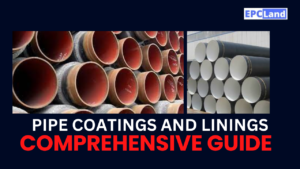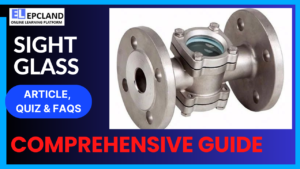Valve Bonnet: Unlock 10 Essential Insights
In the world of piping engineering, every component plays a crucial role in ensuring system integrity and performance. One such vital element is the Valve Bonnet, also known as the Valve Cover. Often overlooked, the Valve Bonnet is more than just a simple lid; it’s a critical part of the valve assembly that directly impacts its function, sealing capabilities, and overall strength. Understanding the different designs, functions, and criticality of the Valve Bonnet is essential for proper valve selection, maintenance, and troubleshooting in various industrial applications. This blog post delves into the core aspects of the Valve Bonnet, shedding light on its importance and key features.
Table of Contents
- Introduction
- Check the complete course on Piping Engineering
- The Quiz Section: Test Your Knowledge on Valve Bonnet
- Explore all available courses on EPCLAND
- Major Takeaways
- Conclusion
- Check all Quiz Blogs with Video Explanations
🔷 Check the complete course on Piping Engineering
The Quiz Section: Test Your Knowledge on Valve Bonnet
Question 1: What is the primary function of a valve bonnet?
Question 2: Besides “bonnet,” what is another common name for this valve component?
Question 3: In which valve type is the bonnet’s primary purpose described as mainly sealing the valve body and providing access for maintenance?
Question 4: In valve types like gate, globe, stop check, and diaphragm valves, what more important role does the bonnet serve compared to simpler applications?
Question 5: What specific component does the bonnet usually contain to help seal around the valve stem and prevent leaks?
Question 6: Which of the following is listed as a method for attaching the bonnet to the valve body?
Question 7: What is considered a critical aspect of the joint between the valve body and the bonnet?
Question 8: According to the information provided, what is one of the common sources of leakage in a valve assembly?
Question 9: For uniformity in pressure handling and corrosion resistance, the bonnet is typically made from what material compared to the valve body?
Question 10: What is a valve called when it is designed without a bonnet?
📘 Explore all available courses on EPCLAND
Major Takeaways
- The Valve Bonnet, or Valve Cover, seals the top of the valve body.
- Bonnets come in different designs tailored to valve type and application.
- While simple in some valves like swing check valves, the Valve Bonnet supports internal parts in gate and globe valves.
- The Valve Bonnet typically houses the stuffing box to prevent stem leaks.
- The body-bonnet joint is a critical pressure boundary and a common leakage point, requiring proper design.
- A valve designed without a Valve Bonnet is called a bonnetless valve.
Conclusion
In summary, the Valve Bonnet is far more than just a cover; it’s a vital, functional component of the valve assembly. From providing a pressure boundary seal and access for maintenance in swing check valves to supporting critical internal parts like the stem, disc, and actuators in gate and globe valves, the Valve Bonnet plays a significant role in the strength, sealing, and overall function of a valve. Understanding the different types, attachment methods, and the importance of the body-bonnet joint is crucial for anyone working with valve systems.
📚 Check all Quiz Blogs with Video Explanations



